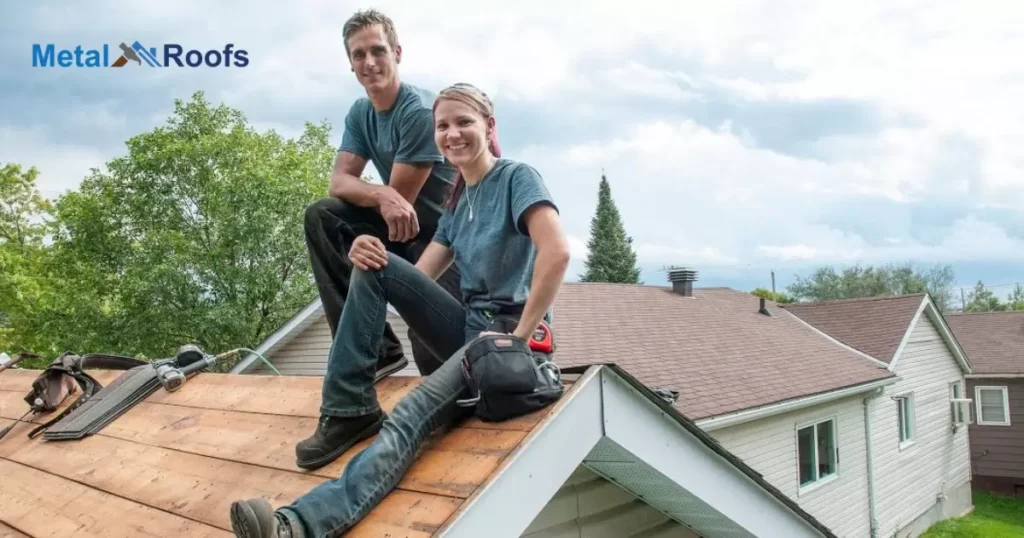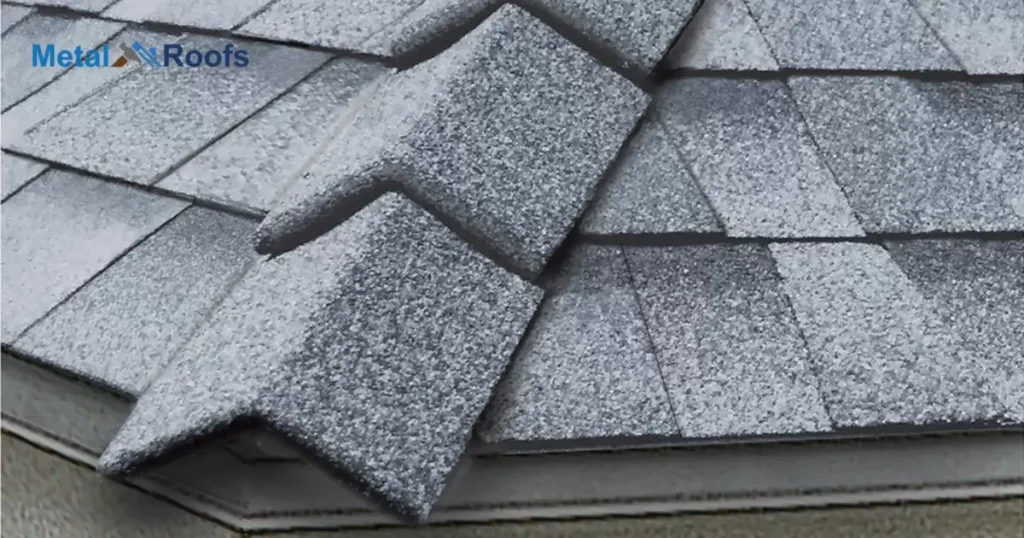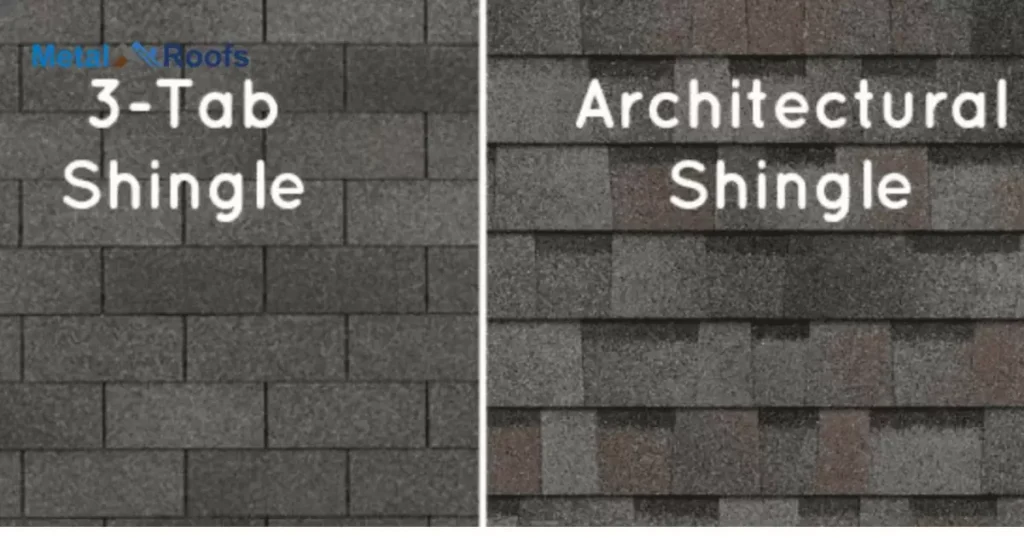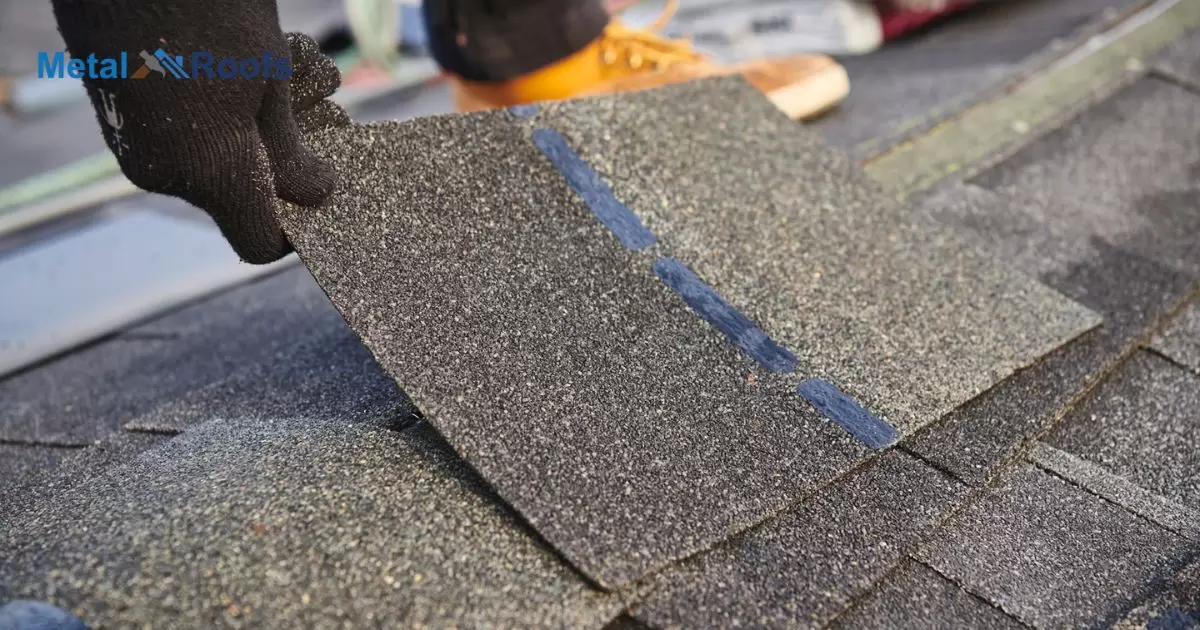Hip and ridge caps are shingles that cover the hip and ridge areas of a roof where two planes intersect. 3 tab shingles are the most common asphalt shingles with three tabs across their lower edge to allow layered application; hip and ridge caps protect and decorate 3 tab shingles at transitions and peaks.
Three tab shingles, with their iconic staggered tabs, cover most roof planes. But where two shingle planes meet, durable hip and ridge caps provide vital protection. Their sleek profile neatly finishes those vulnerable transition spots along ridges and hips.
Installing hip and ridge caps over three tab roof shingles properly finishes the job. Their slope intersections would otherwise expose harsh roof edges. Shingle tabs simply can’t overlap tightly along those peaks and ridges. Sturdy hip and ridge caps solve this with a clean look and vital defense against leaks.
Key Takeaways
- Hip and ridge caps offer tailored protection for roof peaks, preventing water infiltration and enhancing aesthetics.
- 3-tab shingles are cost-effective and straightforward for covering the roof surface.
- Hip and ridge caps add an extra layer of weather protection at vulnerable intersections.
- While 3-tab shingles are budget-friendly, hip and ridge caps provide superior functionality and visual appeal.
- Choosing between the two depends on balancing cost considerations with desired durability and aesthetic outcomes.
What Are Hip and Ridge Caps in Metal Roofing?
Hip and ridge caps in metal roofing are protective covers for the highest points of the roof where two slopes meet. They shield these vulnerable areas from water infiltration and weather damage. Ridge caps are specially designed to fit the ridge line, while hip caps cover the hips where slopes intersect.
These caps are wider than standard roofing panels and have a distinct profile that helps direct water away from the roof’s peak. They provide a finished appearance to the roof, enhancing its overall aesthetics. Hip and ridge caps play a crucial role in maintaining the integrity and longevity of the metal roofing system by preventing leaks and protecting against wind uplift.
Hip and Ridge Caps Can Give Roofers Big Benefits?

Yes, hip and ridge caps offer several benefits for roofers and the overall roofing system:
Enhanced Aesthetics: Hip and ridge caps provide a finished look to the roof by covering the joints and edges where two roof planes meet. This creates a more polished appearance, improving the overall aesthetics of the roof.
Improved Weather Resistance: Properly installed hip and ridge caps can enhance the roof’s ability to withstand various weather conditions, including wind, rain, and snow. They help prevent water penetration and reduce the risk of leaks at vulnerable areas such as roof ridges and hips.
Added Protection: Hip and ridge caps act as a protective barrier against debris, insects, and small animals that could potentially enter through exposed roof joints. This helps prolong the lifespan of the roofing materials and reduces the need for repairs.
Better Ventilation: Some hip and ridge cap systems incorporate ventilation features, such as ridge vents, which allow for better airflow in the attic space. This helps regulate temperature and moisture levels, reducing the risk of moisture-related issues like mold and mildew.
Ease of Installation: Many hip and ridge cap products are designed for easy installation, saving roofers time and labor costs. They come in various materials, such as asphalt shingles, metal, or synthetic materials, offering flexibility to match the existing roofing material.
Increased Longevity: By providing additional protection to critical areas of the roof, hip and ridge caps can contribute to the overall durability and longevity of the roofing system. This can result in fewer maintenance requirements and potentially lower long-term costs for the homeowner.
Overall, hip and ridge caps play a crucial role in both the functionality and appearance of a roof, making them a valuable component for roofers to consider during installation or repair projects.
What Customers Can Gain with Hip and Ridge Caps?
Hip and ridge caps safeguard the roof’s peaks, where slopes meet. They shield these vulnerable spots, preventing water leaks. This extra layer ensures long-lasting protection against harsh weather.
Hip and ridge caps enhance the roof’s appearance, providing a polished finish akin to the sleek look of mill finish metal roof, thereby improving curb appeal. Customers can enjoy both practicality and aesthetic appeal with these essential roofing components.
Hip and Ridge Caps Are an Easy Choice?
Hip and ridge caps are a smart pick for roofing needs. They cover the peak, preventing leaks. They’re tailored for the job, fitting snugly. These caps add a neat finish to your roof’s look. Plus, they’re simple to install, saving time. With their functionality and ease, they’re a top choice.
Installing Ridge Cap Shingles in Metal Roofing

Installing ridge cap shingles on a metal roofing system follows a similar process to installing them on other types of roofing materials, with a few specific considerations for metal roofs. Here’s a general guide on how to install ridge cap shingles on a metal roof:
Prepare the Roof Surface: Ensure that the metal roofing panels are properly installed and securely fastened to the roof deck. The roof surface should be clean, dry, and free of any debris.
Choose the Ridge Cap Material: Select ridge cap shingles for ridge caps specifically designed for use with metal roofing. These may be made of metal, such as aluminum or steel, or they could be specialized metal ridge cap shingles designed to match the appearance of other roofing materials like asphalt shingles.
Measure and Cut Ridge Caps: Measure the length of each ridge or hip where the ridge cap will be installed. Cut the ridge cap material to the appropriate length using tin snips or a metal cutting tool. Ensure that each piece overlaps the next by a few inches to provide proper coverage and protection.
Apply Adhesive: Apply a bead of roofing adhesive along the underside of each ridge cap piece. This adhesive will help secure the ridge cap to the metal roofing panels and provide additional weatherproofing.
Secure Ridge Caps: Place each ridge cap piece over the ridge or hip of the roof, aligning it carefully with the roof’s profile. Press down firmly to ensure good adhesion to the roofing surface. Use screws or nails designed for metal roofing to secure the ridge cap in place, typically along the edges and at regular intervals along the length of the ridge.
Seal Joints: Apply additional roofing sealant or caulk to seal any gaps or joints between ridge cap pieces and between the ridge cap and the metal roofing panels. This will help prevent water infiltration and improve the overall weather resistance of the roof.
Finish and Inspect: Once all ridge cap pieces are installed and secured, inspect the installation for any gaps, loose fasteners, or other potential issues. Make any necessary adjustments or repairs to ensure that the ridge cap installation is watertight and secure.
By following these steps, you can effectively install ridge cap shingles on a metal roofing system, providing both functional and aesthetic benefits to the roof.
Different Styles of High-Profile Hip and Ridge Shingles
| Style | Description |
| Natural Look | Mimics the appearance of natural materials such as wood or slate, offering a rustic aesthetic. |
| Modern Design | Provides a contemporary look with sleek lines and minimalist design elements. |
| Textured Finish | Features a textured surface for added visual interest and depth. |
| Architectural Detail | Includes intricate details and patterns to enhance the overall appearance of the roof. |
| Wide and Thick Profile | Wider and thicker than standard shingles, providing a bold and substantial look. |
High-profile hip and ridge shingles come in various styles. They offer both protection and aesthetics. These shingles are wider and thicker than standard ones. They cover roof peaks and intersections. Their distinct profiles add a finished look.
Different styles cater to diverse architectural preferences. Some mimic the look of natural materials. Others offer a more modern appearance. These shingles enhance both function and beauty.
ProEdge Hip and Ridge shingles
ProEdge Hip and Ridge shingles are specialized roofing components. They cover the peak of a roof where two slopes meet. These shingles are contoured to fit the shape of the roof’s peak, offering enhanced protection and aesthetics.
They complement 3-tab shingles, providing a finished appearance to the roof while preventing water infiltration at critical areas. ProEdge Hip and Ridge shingles ensure a clean and cohesive look for your roofing system.
Hip and ridge caps vs 3 tab shingles cost

When comparing costs, 3-tab shingles come at a lower price. They’re basic, covering the roof’s surface in a simple manner. Hip and ridge caps, on the other hand, are specialized components designed for peak protection. They cost more due to their tailored design.
Frequently Asked Questions
What is the difference between ridge caps and shingles?
Ridge caps cover the peak where two slopes meet, offering specialized protection. Shingles are the basic roofing material covering the entire surface.
Can 3-tab shingles be used for ridge caps?
No, 3-tab shingles are not suitable for ridge caps. Ridge caps require specialized components designed to fit the peak of the roof accurately.
What is better than 3-tab shingles?
Hip and ridge caps offer superior protection and aesthetics compared to 3-tab shingles.
Conclusion
Three tab asphalt shingles cover most roof planes with durable, layered protection. But their tabs leave gaps along hips and ridges. Sleek hip and ridge caps seal these vulnerabilities. Their tapered profile sheds water away from those critical transitions. Finishing with coordinating hip and ridge caps gives roofs a polished, complete look.
Installing three tab shingles takes skill and precision. Carefully placing hip and ridge caps to interlock along peaks demands equal dexterity. When done properly, the whole rugged, layered roof system defends against rain, wind and time. Finally, attractive hip and ridge caps put the perfect crowning touch on your new durable roof.











